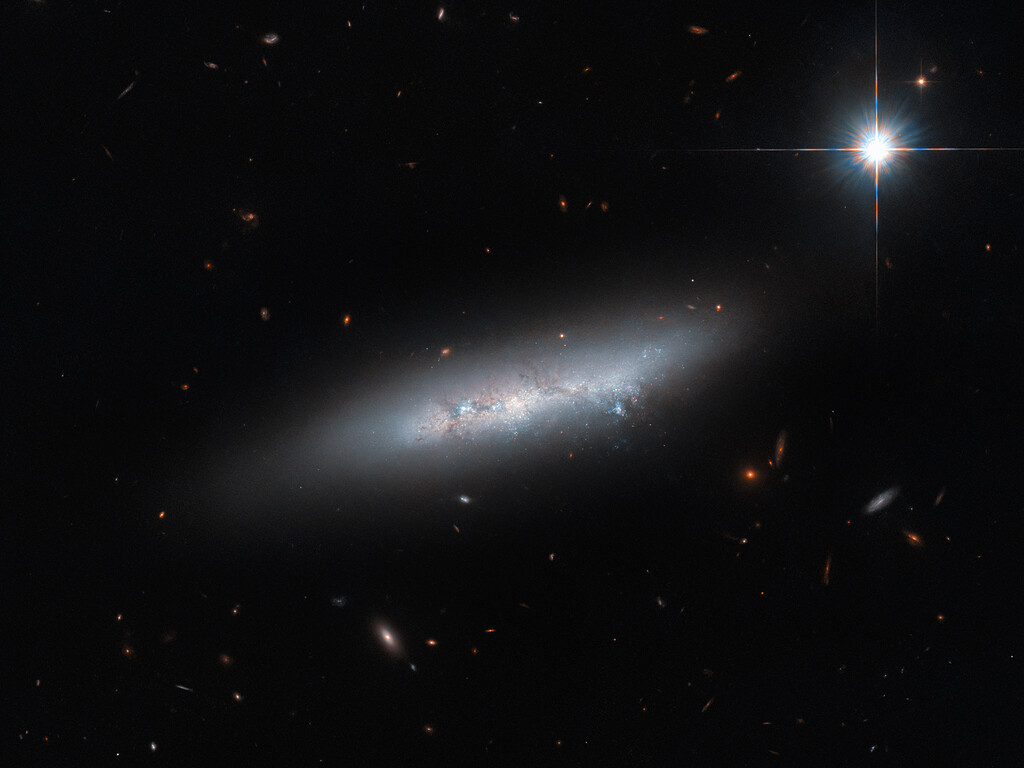A lonely old galaxy? Check out this image captured by Hubble telescope

The Advanced Camera for Surveys (ACS) onboard the NASA/ESA Hubble Space Telescope captured this irregular galaxy, NGC 2814, that lies about 85 million light-years from Earth. Although the galaxy appears to be quite isolated, it actually has three close galactic neighbours: a side-on spiral galaxy called NGC 2820; an irregular galaxy named IC 2458; and a face-on non-barred spiral galaxy known as NGC 2805.
Together, the quartet make up a galaxy group known as Holmberg 124. They belong to a group of 'late-type galaxies', which refers to spiral and irregular galaxies, whilst 'early-type' refers to elliptical galaxies.
"This rather confusing terminology has led to a common misconception within the astronomy community. It is still quite widely believed that Edwin Hubble inaccurately thought that elliptical galaxies were the evolutionary precursors to spiral and irregular galaxies and that is the reason why ellipticals are classed as ‘early-type’ and spirals and irregulars are classed as late-type, the European Space Agency wrote in a post.
These terms were adopted by Hubble from much older astronomical terminology for stellar classifications and did not mean to state that ellipticals were literally evolutionary precursors to spiral and irregular galaxies. Instead, the nomenclature refers to the position in the sequence, and temporal connotations are made at one’s peril’.
A lonely old galaxy? Looks (and names!) can be deceiving…The ESA/Hubble Picture of the Week features NGC 2814 🌌 an irregular galaxy 85 million light-years from Earth. pic.twitter.com/5FPMOmEMCS
— HUBBLE (@HUBBLE_space) November 20, 2023
For the unversed, the Hubble Space Telescope is a space-based observatory that makes observations in visible, infrared and ultraviolet light. Launched in 1990, the telescope has made some of the most dramatic discoveries in astronomy. The images captured by Hubble are much sharper than those from other telescopes, thanks to its vantage point above Earth.










